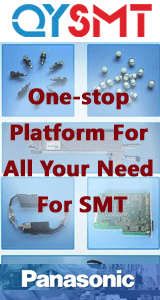Printed Circuit Board Assembly & PCB Design Forum
SMT electronics assembly manufacturing forum.
- SMTnet
- »
- Electronics Forum
- »
- Touch or no touch-up
Touch or no touch-up
![]() OK I am counting someone knowing this.
True or False, if my...
- Feb 11, 2005
by
OK I am counting someone knowing this.
True or False, if my...
- Feb 11, 2005
by
![]()
![]() Your question is very scary coming from Sanmina !
...
- Feb 11, 2005
by
Your question is very scary coming from Sanmina !
...
- Feb 11, 2005
by
![]()
![]() It sounds like you already know the answer.
Hand solderin...
- Feb 11, 2005
by
davef
It sounds like you already know the answer.
Hand solderin...
- Feb 11, 2005
by
davef
![]()
![]()
![]() Depends what the joint is on, and how historically it has pe...
- Feb 11, 2005
by
Rob
Depends what the joint is on, and how historically it has pe...
- Feb 11, 2005
by
Rob
![]()
![]()
![]() A touched-up solder joint is never as reliable as one solder...
- Feb 11, 2005
by
PeteC
A touched-up solder joint is never as reliable as one solder...
- Feb 11, 2005
by
PeteC
![]()
![]()
![]() Don't forget the possibility of causing component damage in ...
- Feb 11, 2005
by
Don't forget the possibility of causing component damage in ...
- Feb 11, 2005
by
brown
- SMTnet
- »
- Electronics Forum
- »
- Touch or no touch-up







